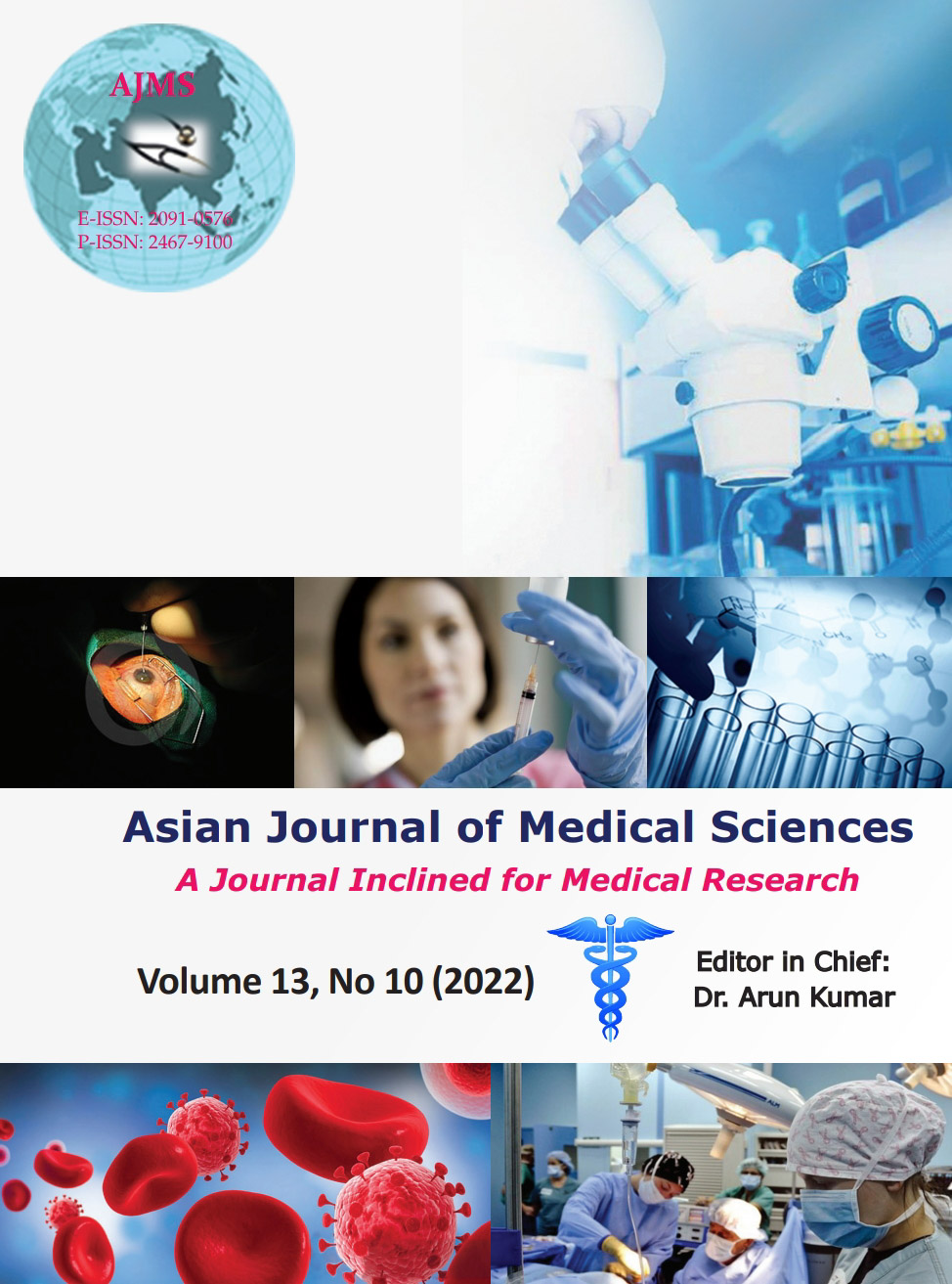A prospective study on prevalence of thalassemic gene disorder and hemoglobinopathies in pregnancy: Antenatal and intranatal outcome in a hospital-based population of Eastern India
Keywords:
Anemia; Thalassemia;Haemoglobinopathies; Intrauterine growth restriction;Obstetric cholestasis; Gestational diabetes mellitus; High performance liquid chromatographyAbstract
Background: Thalassemia syndromes are autosomal recessive disorders and the most commonly inherited hemoglobinopathies in the world. Among these, β-thalassemia is the most common type of thalassemia in Eastern India and in West Bengal. Thalassemic mothers are more predisposed to maternal complications such as hypertensive disorders, gestational diabetes mellitus (GDM), and adverse neonatal outcome in terms of low birth weight, prematurity, etc. This study was to assess the effect of thalassemia gene disorder and hemoglobinopathies (thal-hbpathy) on fetomaternal health.
Aims and Objectives: This study was done to evaluate the effect of thal-hbpathy on fetomaternal health and to compare their antenatal, intranatal outcome with control unaffected mothers, and with anaemic non-thalassemic mothers.
Materials and Methods: This is a prospective and observational study of 150 women who attended tertiary care hospital during 18 months, fulfilling pre-defined inclusion and exclusion criteria. All women were evaluated during antenatal and intranatal period. Observations were recorded and interpreted.
Results: Among 150 participants, 80(53.3%) were having normal hemoglobin (Hb) level and normal hemoglobin high performance liquid chromatography(Hb-HPLC), 54(36.7%) had anemia (Hb <10.9g/dl) with normal Hb pattern on HPLC, and 16(10.66%) had thal-hbpathy. Hb-HPLC revealed β-thalassemia trait in 7.3%, E β-thalassemia trait in 0.7%, whereas HbE heterozygous 2.7% in our study population. Majority (15/16) of thal-hbpathy patients were anemic. Oligo-hydramnios was detected in 18.7% of thalassemic women as compared to anemic (3.7%) and normal group (3.7%), which were significant. Obstetric cholestasis (OC) 12.5%(2/16) and intrauterine growth restriction (IUGR) were observed in thal-hbpathy group antenatal patients which were statistically significant P<0.05.
Conclusion: Overall prevalence of thalassemia was 10.7%. The important fetomaternal complications observed were prematurity, IUGR, OC, oligohydramnios, OC(PIH), and GDM.
Downloads
Downloads
Published
How to Cite
Issue
Section
License
Copyright (c) 2022 Asian Journal of Medical Sciences

This work is licensed under a Creative Commons Attribution-NonCommercial 4.0 International License.
Authors who publish with this journal agree to the following terms:
- The journal holds copyright and publishes the work under a Creative Commons CC-BY-NC license that permits use, distribution and reprduction in any medium, provided the original work is properly cited and is not used for commercial purposes. The journal should be recognised as the original publisher of this work.
- Authors are able to enter into separate, additional contractual arrangements for the non-exclusive distribution of the journal's published version of the work (e.g., post it to an institutional repository or publish it in a book), with an acknowledgement of its initial publication in this journal.
- Authors are permitted and encouraged to post their work online (e.g., in institutional repositories or on their website) prior to and during the submission process, as it can lead to productive exchanges, as well as earlier and greater citation of published work (See The Effect of Open Access).




